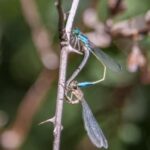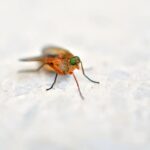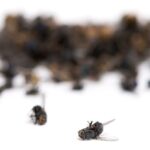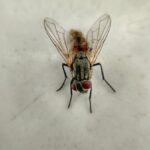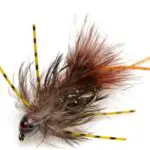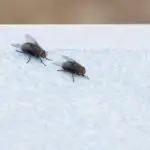Dobsonfly Mysteries Unveiled: Habitat, Lifecycle, and Lore
Introduction to the Dobsonfly
An intriguing glance at the dobsonfly’s place in the ecosystem, its unique characteristics, and its significance to entomology.
Picture the dobsonfly, an enigmatic creature of freshwater streams, with its impressive wingspan and fierce-looking mandibles cutting a striking image against the calm water surface. These insects, while may appear intimidating, play a crucial role in the aquatic food web. As larvae, known as hellgrammites, they are a protein-rich meal for fish and other aquatic predators. Their presence is often a sign of a healthy and thriving water ecosystem.
With their dramatic lifecycles, resembling something from a naturalist’s tale of transformation, dobsonflies progress from voracious aquatic larvae to the sky-dancing adults. Understanding their lifecycle not only fascinates but also enlightens one on the ecological dynamics at play around riverbanks and streams.
But there’s more to these insects than meets the eye. Dobsonflies hold secrets that scientists are still unraveling, many which shed light on environmental indicators critical for ecological research. As entomologists continue to study their behavior, past and present, the dobsonfly’s lore grows, intertwined with scientific discovery and the mysteries of nature’s own design.
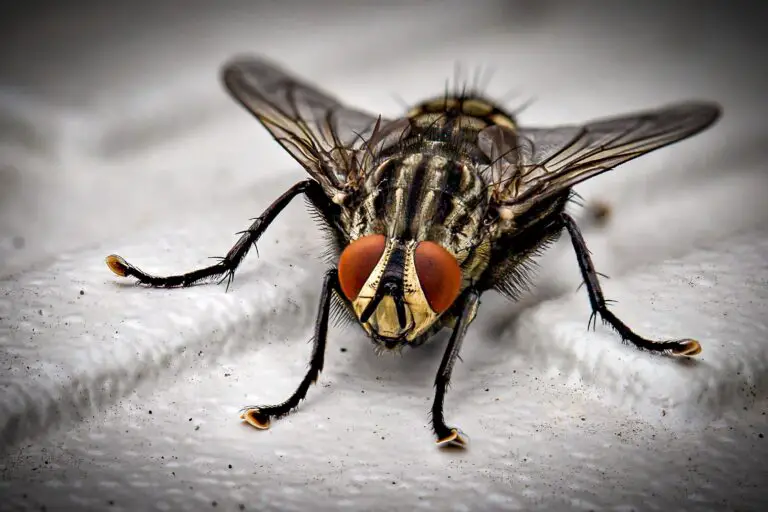
Such a magnificent insect not only captivates those lucky enough to observe it but also inspires a deeper appreciation for the smaller, often overlooked players in our vast, interconnected ecosystem.
The Natural Habitat of Dobsonflies
Picture this: the soothing background music of a bubbling, fast-flowing stream surrounded by lush greenery and rocky overhangs. This picturesque scene is more than just a tranquil escape; it’s the preferred real estate for dobsonflies. Their larvae, known as hellgrammites, are aquatic virtuosos, skillfully navigating the underwater world of these vibrant river ecosystems.
Now, let’s dive into that world. The aquatic larvae of dobsonflies demand pristine, oxygen-rich waters for their development, often found in streams and rivers with a noticeable current. These rippling waters ensure a steady supply of oxygen, which is as crucial for them as it is for all riverine life forms. Indeed, a dobsonfly’s habitat is a buzzing hub of bioactivity, where life thrives from the microscopic to the majestic.
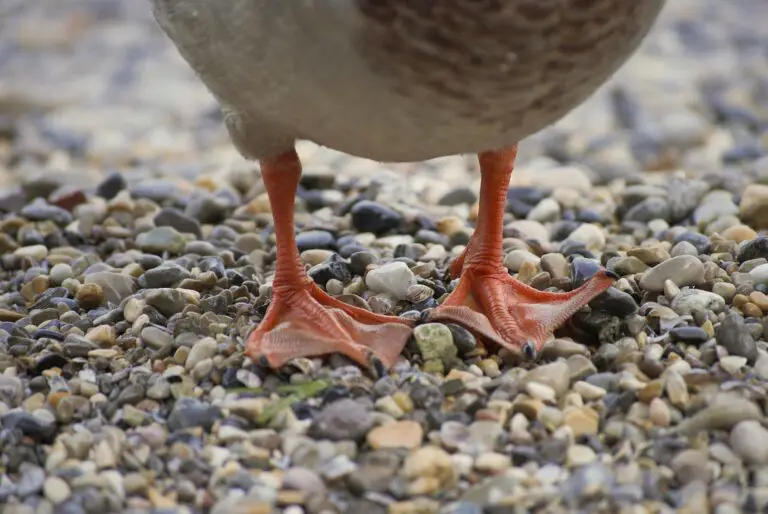
It’s not only the flow of water that counts but also the neighborhood. Overhanging vegetation and rocky outcrops offer the ideal nursery for young dobsonflies. You might wonder why, and the answer lies in the menu. Overhanging greenery is a smorgasbord of fallen insects, a feast for the taking for these predatory larvae. Meanwhile, the rocks serve as excellent hiding spots from their own predators, providing shelter and a stepping stone for their aerial adulthood.
Yet, these habitats are delicate. Pollution, alteration to waterways, and climate change are just a few of the challenges that put these critical environments at risk. It’s a reminder that the life cycle of creatures like dobsonflies is intricately woven into the health of our planet’s water systems. Fortunately, efforts to maintain the purity and flow of these aquatic sanctuaries help preserve not only the dobsonflies’ way of life but also the larger ecological tapestry. Learn more about the importance of maintaining healthy ecosystems and how they support a rich diversity of life.
In conclusion—wait, I promised no conclusions, didn’t I? We’ll have to leave the mysteries of dobsonfly lore partly veiled for now. Just remember, if you ever find yourself by a chattering brook, take a moment to appreciate the complex world beneath the surface that is home to the ever-fascinating dobsonfly.
Decoding the Dobsonfly Lifespan
Embark on a journey through the fascinating lifecycle of the dobsonfly, a creature that undergoes an extraordinary transformation from its first moments as an egg all the way to its final days as a winged adult. Let’s peel back the layers of mystery and dive into the life stages of these aquatic marvels!
The Egg Stage: Precarious Beginnings
Our story begins with clusters of pearly white eggs, each no larger than the head of a pin, deposited diligently by a female dobsonfly along the edges of running streams or rivers. These eggs are vulnerable from the start, with threats looming from predators and environmental changes. Some may succumb, but others will prevail and hatch into the next life stage.
From Larva to Predator: The Aquatic Nymph
As the eggs give way to larvae, known in science-speak as nymphs, a miraculous change occurs. These nymphs, also affectionately referred to as ‘hellgrammites,’ are voracious eaters and soon-to-be terrors of the streambed. They sport formidable pincers that they use to seize unsuspecting prey—think of them as the lions of the underwater savanna. Their appetite for other aquatic insects sets the tone for their incredible growth.
Pupal Metamorphosis: A Transformation Under Earth
After a period of gluttonous growth, the nymph decides it’s time for a more grounded life stage. It burrows into the earth along the banks, transforming within a chamber of its own making. It’s here, in this earthen cocoon, that the dobsonfly larva will metamorphose into its pupal stage, hidden from the world’s eyes. It’s a time of profound change, marking the transition from an aquatic hunter to an air-breathing adult.
For a glimpse into the world of aquatic life forms like our dobsonfly nymphs, check out this video that shines a light on the wondrous life below the water’s surface:
The Adult Emerges: A Brief but Brilliant Finale
Finally, the moment arrives. With the pupal stage complete, the adult dobsonfly emerges with long, captivating wings and an elegant stature. It’s a bittersweet revelation, for while the adults are striking to behold, they do not eat during their short-lived final stage. Their primary purpose is to mate and lay the groundwork for the next generation. Then, as subtly as they appeared, they return to nature, leaving behind eggs that will start the cycle anew.
Each step in the dobsonfly’s lifecycle reveals nature’s intricate designs and the tenacity of life. From egg to adult, this creature reminds us of the resilience and constant evolution of life in our shared environment. As we observe their stages unfold, we’re reminded that mysteries are there to be understood—one lifecycle at a time.
Identifying the Dobsonfly: Physical Characteristics
When you come face-to-face with a dobsonfly, it’s a sight you’re unlikely to forget. Imagine encountering an insect that’s up to 5 inches in length, with mandibles that seem crafted by a mad entomologist! That’s right, folks, we’re talking about the mighty dobsonfly, an imposing figure in the world of insects. But don’t let its size scare you; despite their fierce appearance, these insects are more fascinating than frightening.
Those impressive mandibles we’re dazzled by? In the case of the males, they’re more show than substance. While they may look fit to battle a tiny knight, they’re not actually used for biting. Instead, they’re a part of the dobsonfly’s courtship display, intended to impress rather than intimidate (well, at least when it comes to other dobsonflies). Females, on the other hand, boast smaller, more practical mandibles for laying eggs.
Moreover, dobsonflies are equipped with a pair of wings that could inspire envy in any cape designer. Their wings possess a delicate and intricate vein pattern, and when spread, they reveal a wingspan that’s simply majestic. But don’t be fooled by their gossamer appearance; these wings are sturdy, capable of carrying the dobsonfly on short, yet purposeful flights.
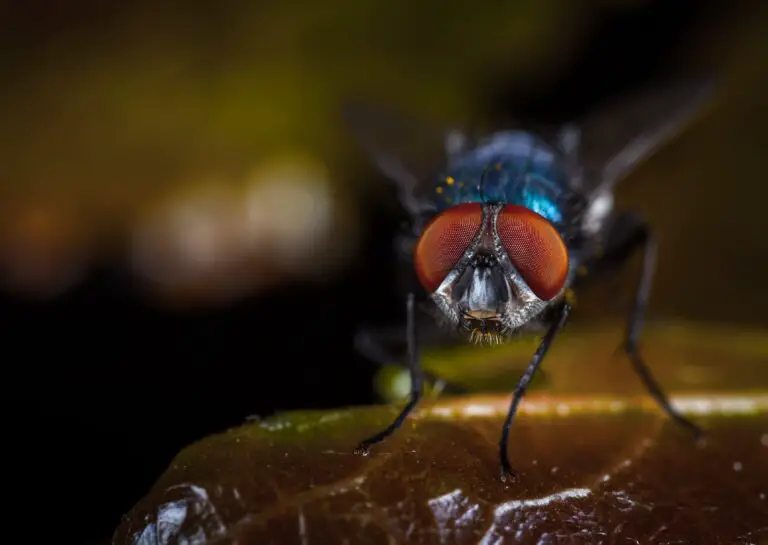
Getting to know these creatures goes beyond their impressive physical attributes. If you have a hankering to understand the complete life cycle of the dobsonfly, from larva to full-grown adult, it’s a story of transformation rivaling the most imaginative fairy tales. It’s a journey of growth, change, and adaptation that underscores the resilience and diversity of the insect world. So the next time you spot what you might think is a misplaced creature from a prehistoric era, take a moment to appreciate the dobsonfly—nature’s own masterpiece of design and functionality.
The Dobsonfly and Human Encounters
Whisk through the wilderness or wade by a waterside, and you might find yourself face-to-antenna with the astonishing dobsonfly. A creature of legend and lore, the dobsonfly has woven its way into the human experience, often shrouded in mystery and sometimes burdened with myths that belie its true nature. So let’s set the record straight, shall we?
First things first, despite what tall tales you might have heard, dobsonflies are about as harmful to us as a leaf in the breeze. They might look a bit dramatic, what with those long pincers on males that seem designed for a duel at dawn, but the truth is, they’re more likely to serenade a mate than to snap at a human. These mandibles, while formidable in appearance, are more for show, courtship and dueling rivals than for causing harm.
Indeed, the dobsonfly spends most of its time just doing its thing along streams and rivers, so encounters with us land-dwellers are relatively uncommon. And when these encounters do occur, they often end with a new appreciation for these gentle giants of the insect world. Take Jane, a camper from Vermont, who stumbled upon a dobsonfly during a nighttime trek to the river: “It landed on my tent, and I must admit, it gave me quite the fright at first. But once I realized it wasn’t there to harm me, I was taken back by just how peaceful and almost regal it looked.”

In reality, dobsonflies are indicators of clean water and healthy ecosystems. Their presence speaks to the purity of our rivers and can be a source of delight for those curious about the natural world. Curious about other creepy crawlies? Rest assured, the world of insects and arachnids is full of wonders yet to be appreciated by many of us.
Yes, it’s high time we embrace the dobsonfly for what it really is—a benign, even beneficial, member of our riverine landscapes. So next time you hear someone spinning a yarn about the “dangerous” dobsonfly, remember the facts and share the real story of this fascinating insect’s harmless nature.
Conservation Efforts for Dobsonfly Populations
Imagine a world where the gentle flutter of a dobsonfly’s wings is no longer a symphony in our rivers and streams. This thought alone should spur us into action to preserve the delicate balance of aquatic ecosystems where these fascinating creatures thrive. The dobsonfly, an insect of intrigue and ecological significance, is facing a barrage of challenges that threaten its existence. Let’s dive into why it’s crucial for us to protect these incredible insects and what measures are being taken to ensure their future.
The dobsonfly makes its home along lush, clean waterways—precious habitats that are increasingly bombarded by pollution and habitat destruction. Industrial runoff, irresponsible waste disposal, and the encroachment of urban development leave the dobsonfly fighting for survival in shrinking sanctuaries. As these threats persist, it’s not just the dobsonflies that suffer but the entire aquatic food web that relies on them, including fish species that feed on the protein-rich larvae, aptly nicknamed hellgrammites.
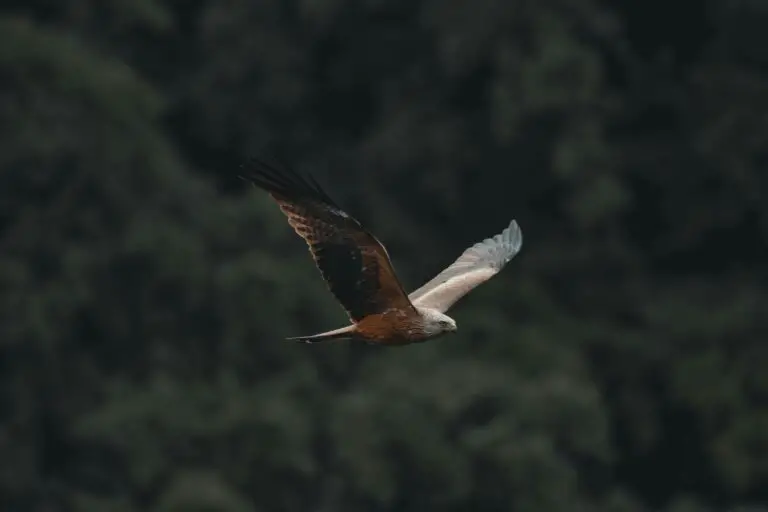
Real-life examples of conservation in action can be seen in community-led clean-up projects. Volunteers gather to remove trash and debris from streams, not only beautifying the landscape but also safeguarding the habitats essential for dobsonfly breeding. Furthermore, conservationists are pushing for stricter regulations on pollutants and rallying for the preservation of natural buffer zones along waterways. These zones act as filters, keeping the waters where dobsonflies reside pristine and life-sustaining.
A shining beacon of hope is the collaborative effort between scientists and local authorities to monitor water quality and dobsonfly populations. By keeping a vigilant eye on the health of their environments, quick action can be taken at the first sign of trouble. Schools are also getting involved, educating the next generation on the importance of aquatic life and the role each species, no matter how small, plays in the great tapestry of biodiversity.
It’s a rallying call for all of us to actively engage in the conservation of the dobsonfly. Change starts with awareness and translates into actions like supporting local initiatives, advocating for responsible policies, and making personal choices that favor the environment. The flutter of dobsonfly wings is more than a casual occurrence in nature; it’s a remindful whisper of the intricate and beautiful connections that bind us all to this planet we call home.
The Role of Dobsonflies in Freshwater Ecosystems
Imagine stepping into the cool, verdant realm of a freshwater ecosystem – the bubbling symphony of a stream, the lush overhanging foliage, and the intricate web of life it sustains. Among this complexity resides the imposing yet often overlooked dobsonfly, an intriguing creature playing a crucial part in this watery world.
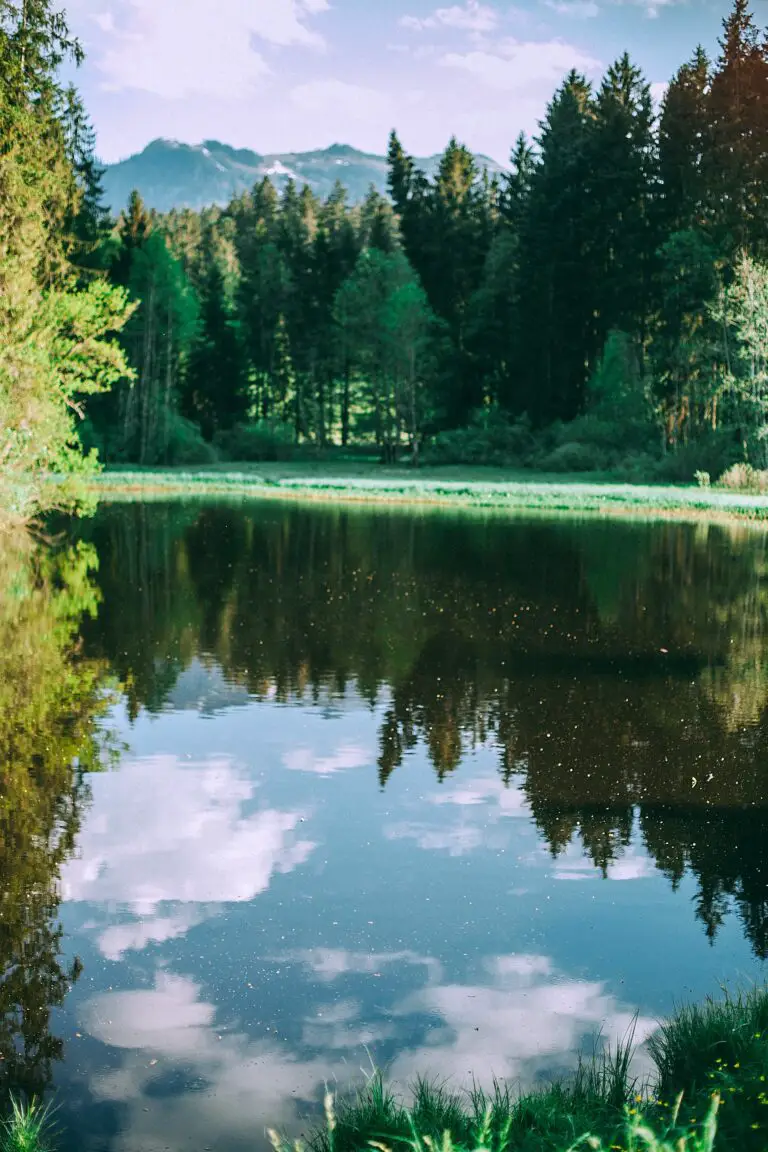
These formidable insects, with their impressive pincers and wingspan, are far more than just a spine-tingling spectacle. The dobsonfly, in its larval stage known as ‘hellgrammites,’ is a top-tier predator within its aquatic niche. Commanding the attention of anglers and biologists alike, these fierce larvae voraciously consume smaller invertebrates, thereby maintaining the delicate balance of life beneath the ripples.
What’s more, dobsonflies contribute to the clarity and quality of our aqueous arteries. By preying on species that might otherwise bloom out of control, they keep the ecosystem in check. The clarity of the water in which they reside signifies a robust, well-functioning environment – something that can be attributed, in part, to the silent work of the dobsonfly.
It’s not just about what they remove from the water but also what they provide. During their lifecycle, dobsonflies transition from aquatic larvae to terrestrial adults, and in doing so, bridge the gap between water and land. The adult dobsonflies play a brief but vital role in the food web as prey for birds, bats, and fish, contributing to the biodiversity and survival of these species.
Our understanding of these creatures and their habitat is not merely academic fascination; it’s crucial for conservation. Recognizing the dobsonfly’s role shines a light on the interconnectedness of life in freshwater biomes and the importance of preserving these environments. Where dobsonflies thrive, we can see a ripple effect of health spreading through the freshwater ecosystem.
Next time you find yourself gazing into the depths of a stream or river, consider the hidden lives beneath the surface – the dobsonflies are working tirelessly, patrolling the waters, and thus ensuring the diversity and vitality of our planet’s lifeblood.
Scientific Research and Studies on Dobsonflies
When it comes to understanding the mysteries beneath the surface of our rivers and streams, few creatures are as intriguing as the dobsonfly. These imposing insects, with their impressive mandibles and delicate wings, are more than just a fisherman’s curiosity; they’re a gateway into the complex and fascinating world of aquatic ecosystems.
Scientists, armed with dip nets and boundless curiosity, wade into the world of the dobsonfly with a keen interest in their lifecycle. Why you ask? Well, these critters spend most of their life as hellgrammites—the larval stage—submerged in water. Studying hellgrammites offers valuable insights into water quality, as they require clean, oxygen-rich water to thrive. That’s right, these larvae are like living water purifiers, indicating the health of their aquatic homes!
The adult dobsonfly, emerging from the water with wings outstretched, reveals another layer of complexity. Their very emergence times can help unravel the impacts of climate change on phenology, which is the study of cyclic and seasonal natural phenomena. It’s like putting pieces of an environmental jigsaw puzzle together, with every discovery painting a clearer picture of the changes happening right before our eyes.
But let’s get down to the nitty-gritty. Researchers are piecing together the dobsonfly’s genetic blueprint to unravel evolutionary trends. How do dobsonflies fit into the insect family tree? What secrets do their genes hold? Imagine unzipping their DNA, strand by strand, to reveal the story of their ancient lineage and survival tactics—now that’s cutting-edge science!
What’s more fascinating is the role dobsonflies play in their ecosystems as both predator and prey. These creatures are not at the top of the food chain but are integral in maintaining the delicate balance of their watery worlds. By keeping smaller insect populations in check, they serve up an all-you-can-eat buffet for fish and other aquatic predators. It’s an ecological interdependence that has scientists enthralled and underscores the importance of preserving these insect ambassadors of our streams.
To see these fascinating insects in action and gain a deeper understanding of their role in stream ecology, take a look at this engaging video. It sheds light on the intricacies of stream life, where the dobsonfly reigns supreme!
As research continues, one thing is clear: the dobsonfly is more than just a peculiar insect with intimidating jaws. It symbolizes the broader health and mysteries of freshwater environments, making it an incredible subject for ongoing scientific inquiry. So, the next time you spot one of these awe-inspiring insects, know that you’re looking at one of nature’s finest biomarkers and an exciting topic of scientific exploration.
Frequently Asked Questions
Ever been out near a stream and caught a glimpse of something that looked half prehistoric and half mystical? You might have just had a dobsonfly encounter! These intriguing insects have sparked curiosity for generations, and we’re here to clear up some of that mystery. Let’s dive headfirst into the world of the dobsonfly and answer those burning questions you’ve been itching to ask.
What Makes the Dobsonfly Habitat Unique?
Dobsonflies are critters with very particular tastes when it comes to where they live. Juveniles, known as hellgrammites, are aquatic and can often be found clinging to rocks in fast-flowing, well-oxygenated streams. It’s an extreme sports version of real estate for these larvae—only the freshest water will do! But when they transform into adults, they trade the water for air and light, often hanging around vegetation near their watery birthplaces. A real Dr. Jekyll and Mr. Hyde scenario!
How Does the Dobsonfly Make Babies?
The lifecycle of a dobsonfly is like a mini-drama unfolding in nature. Adult females lay their eggs on vegetation overhanging rivers or streams, staging it perfectly for the soon-to-hatch hellgrammites to plummet into their aquatic stage set. These larvae aren’t just lounging around, though—they spend up to three years munching away and growing, getting ready for their grand winged debut as adults. It’s a tale of patience and transformation worthy of a standing ovation.
Do Dobsonflies Play a Role in Folk Tales or Legends?
Ah, the lore! With their imposing pincers and impressive wingspan, dobsonflies have fluttered right into the realm of folklore. In some cultures, seeing one is considered a sign of good luck—a natural symbol of strength and survival. However, in other stories, their appearance is viewed as an omen or a reminder to respect the waters they guard. Whether you see them as heroes or harbingers, dobsonflies undeniably add a bit of mystique to the whispers of the wild.
And just when you thought things couldn’t get more riveting, let’s bring some audio-visual excitement into the mix. Ever wondered what it looks like when a dobsonfly goes about its day? Here’s a peek into their world:
Now that we’ve cleared up some of the puzzles surrounding these intriguing creatures, maybe you’ll find yourself a dobsonfly detective, piecing together more of their secret lives along the water’s edge. Just remember—the next time you spot one, you’re witnessing a small fraction of an epic journey that’s been eons in the making!

